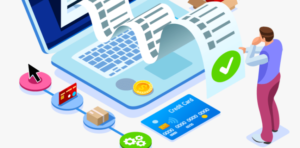E-commerce Mistakes to Avoid: Launch and Grow Your Online Store
The world of e-commerce is booming! With the ever-increasing convenience of online shopping, many entrepreneurs are drawn to the potential of launching their own online store. However, the road to e-commerce success is paved with both opportunities and pitfalls. To navigate this exciting yet competitive landscape, it’s crucial to avoid common mistakes that can hinder your online store’s growth.
This blog will equip you with the knowledge to dodge these pitfalls and set your e-commerce business on a path to success. We’ll delve into critical areas where mistakes often occur, offering insights and actionable tips to help you build a thriving online store.
1. Lack of Planning and Research: Diving Headfirst into the Unknown
The Mistake: Jumping into launching an online store without a clear plan or thorough market research is a recipe for disappointment. Without a roadmap, you’ll struggle to identify your target audience, differentiate yourself from competitors, and navigate marketing strategies effectively.
The Solution:
- Develop a Business Plan: This document serves as your blueprint, outlining your target market, unique selling proposition (USP), marketing strategy, financial projections, and operational processes.
- Market Research is Key: Analyze your target audience, their shopping habits, and existing competitors in your niche. Understand their needs, preferences, and pain points.
Actionable Tips:
- Conduct competitor analysis to identify gaps in the market and opportunities for your brand.
- Utilize online tools like Google Trends and social media listening to understand customer sentiment and buying behavior.
- Create buyer personas to define your ideal customer’s demographics, needs, and online behavior.
2. Choosing the Wrong E-commerce Platform: Building on a Shaky Foundation
The Mistake: Selecting an e-commerce platform based on cost or aesthetics alone can lead to limitations and scalability issues down the road. The platform you choose should cater to your specific needs, product range, and future growth plans.
The Solution:
- Research E-commerce Platforms: Compare different platforms like Shopify, BigCommerce, Magento, and WooCommerce. Consider factors like features, scalability, pricing, ease of use, and security.
- Focus on Functionality Over Frills: While a user-friendly interface is important, prioritize features that streamline your operations, such as inventory management, product listings, payment processing, and marketing integrations.
Actionable Tips:
- Start with a platform that is scalable, allowing you to accommodate future growth in product offerings and customer base.
- Evaluate the platform’s customer support options to ensure you have access to assistance when needed.
- Consider your technical skills and comfort level. Opt for a platform with a user-friendly interface if you’re new to e-commerce.
3. Unclear Value Proposition: Failing to Stand Out in a Crowded Marketplace
The Mistake: In a competitive online marketplace, simply having great products isn’t enough. You need a clear value proposition that differentiates your brand and resonates with your target audience.
The Solution:
- Define Your Unique Selling Proposition (USP): What makes your brand and products stand out from the competition?
- Focus on Customer Benefits: Highlight how your products solve customer problems or improve their lives.
Actionable Tips:
- Craft a compelling brand story that connects with your target audience on an emotional level.
- Develop a clear and consistent brand identity that is reflected in your website design, product descriptions, and marketing materials.
- Offer unique products or curate a product selection that caters to a specific niche.
4. Poor User Experience (UX): Confusing Your Customers and Losing Sales
The Mistake: A cluttered, slow-loading website with a confusing navigation is a surefire way to lose customers. Your online store should be intuitive and user-friendly, guiding customers seamlessly through the buying journey.
The Solution:
- Prioritize Website Design and Navigation: Invest in a clean, user-friendly website design that is easy to navigate on all devices (desktop, mobile, tablet).
- High-Quality Product Images and Descriptions: Professional product photos and detailed descriptions are essential for building trust and informing purchase decisions.
- Optimize for Mobile: A significant portion of online shopping happens on mobile devices. Ensure your website is mobile-responsive and provides a smooth browsing experience.
Actionable Tips:
- Conduct user testing to identify and address any navigation issues or confusing elements on your website.
- Offer multiple high-resolution images from different angles for each product.
- Include clear calls to action (CTAs) that guide customers towards the desired action, such as “Add to Cart” or “Buy Now.”
5. Neglecting Customer Service: Leaving a Bad Taste in Your Customers’ Mouths
The Mistake: Underestimating the importance of customer service can damage your reputation and drive customers away. Positive customer experiences are key to building brand loyalty and encouraging repeat business.
The Solution:
- Prioritize Responsive and Helpful Customer Service: Offer multiple customer service channels (email, phone, live chat) and ensure prompt, professional responses to inquiries.
- Implement a Clear Return and Refund Policy: Make your return and refund policy easily accessible and transparent. This builds trust and encourages customers to purchase with confidence.
Actionable Tips:
- Empower your customer service team with the knowledge and resources to address customer concerns effectively.
- Train your team on active listening and communication skills to ensure a positive customer experience.
- Utilize customer service software to streamline communication and track interactions.
6. Insecure Payment Processing: Putting Customer Data and Your Business at Risk
The Mistake: Failing to prioritize secure payment processing can lead to data breaches, lost customer trust, and potential legal repercussions.
The Solution:
- Choose a Reputable Payment Gateway: Select a PCI-compliant payment gateway that utilizes secure encryption technology to protect customer financial information.
- SSL Certificate: Ensure your website has a valid SSL (Secure Sockets Layer) certificate, which encrypts data transmission between your website and customer browsers.
Actionable Tips:
- Regularly update your payment gateway software and website plugins to address any security vulnerabilities.
- Clearly display security badges and trust signals on your website to reassure customers about the safety of their transactions.
7. Ignoring Mobile Commerce: Missing Out on a Growing Trend
The Mistake: In today’s mobile-centric world, neglecting mobile commerce (m-commerce) is a significant oversight. A significant portion of online shopping now occurs on smartphones and tablets.
The Solution:
- Mobile-Responsive Website: As mentioned earlier, ensure your website offers a seamless and user-friendly experience on mobile devices.
- Mobile App (Optional): Consider developing a mobile app for a more immersive and convenient shopping experience, especially if your target audience is heavily mobile-reliant.
Actionable Tips:
- Optimize your product images and descriptions for mobile viewing.
- Offer mobile-specific promotions and discounts to incentivize mobile purchases.
- Utilize push notifications to engage customers and promote new products or special offers.
8. Ineffective Marketing Strategy: Reaching the Wrong Audience or Not Reaching Enough People
The Mistake: A haphazard approach to marketing will leave you struggling to reach your target audience and generate sales. You need a well-defined marketing strategy that leverages various channels to reach your ideal customers.
The Solution:
- Identify Your Marketing Channels: Explore options like search engine optimization (SEO), social media marketing (SMM), email marketing, influencer marketing, and pay-per-click (PPC) advertising.
- Target the Right Audience: Tailor your marketing campaigns to resonate with your ideal customer’s interests and needs.
Actionable Tips:
- Utilize social media platforms where your target audience is active and create engaging content that resonates with them.
- Leverage email marketing to nurture leads, promote new products, and build customer loyalty.
- Partner with relevant influencers in your niche to reach a wider audience and build brand awareness.
9. Not Tracking and Analyzing Data: Flying Blind Without Insights
The Mistake: Failing to track and analyze data can leave you in the dark about your website’s performance, marketing campaigns’ effectiveness, and customer behavior.
The Solution:
- Implement Analytics Tools: Utilize website analytics tools like Google Analytics to track website traffic, user behavior, and conversion rates.
- Data-Driven Decisions: Analyze data to understand what’s working and what’s not in your marketing efforts. Use these insights to refine your website, product offerings, and marketing strategies for better results.
Actionable Tips:
- Set clear goals and KPIs (key performance indicators) for your website and marketing campaigns. This allows you to track progress and measure success effectively.
- Conduct A/B testing to compare different website elements and marketing approaches to see what resonates best with your audience.
- Regularly review and analyze data to identify trends and opportunities for improvement.
10. Lack of Patience and Focus: Giving Up Too Soon or Chasing Shiny Objects
The Mistake: Building a successful e-commerce business takes time, dedication, and continuous improvement. Don’t get discouraged if you don’t see overnight success. Chasing every new marketing trend can also distract you from your core strategies.
The Solution:
- Maintain a Long-Term Perspective: Success in e-commerce is a marathon, not a sprint. Be prepared to invest time and effort in building brand awareness, customer loyalty, and a sustainable business model.
- Focus on Your Core Strategies: While staying informed about new trends is valuable, avoid getting sidetracked.
- Celebrate Milestones: Acknowledge your progress, no matter how small. This keeps you motivated and focused on your long-term goals.
Actionable Tips:
- Set realistic expectations for growth. Aim for steady, sustainable progress rather than unsustainable spikes in traffic or sales.
- Regularly review and refine your marketing strategies based on data insights, but avoid making drastic changes too frequently.
- Surround yourself with a supportive network of other entrepreneurs or online communities for encouragement and idea exchange.
Conclusion: Building Your E-commerce Success Story
The world of e-commerce is brimming with potential. By avoiding these common pitfalls and implementing the actionable tips provided, you can set your online store on a path to success. Remember, a successful e-commerce business is built on a strong foundation. Prioritize a clear brand identity, user-friendly website, responsive customer service, secure payment processing, and data-driven marketing strategies. With dedication, continuous learning, and a focus on customer satisfaction, you can turn your e-commerce dream into a thriving reality.

